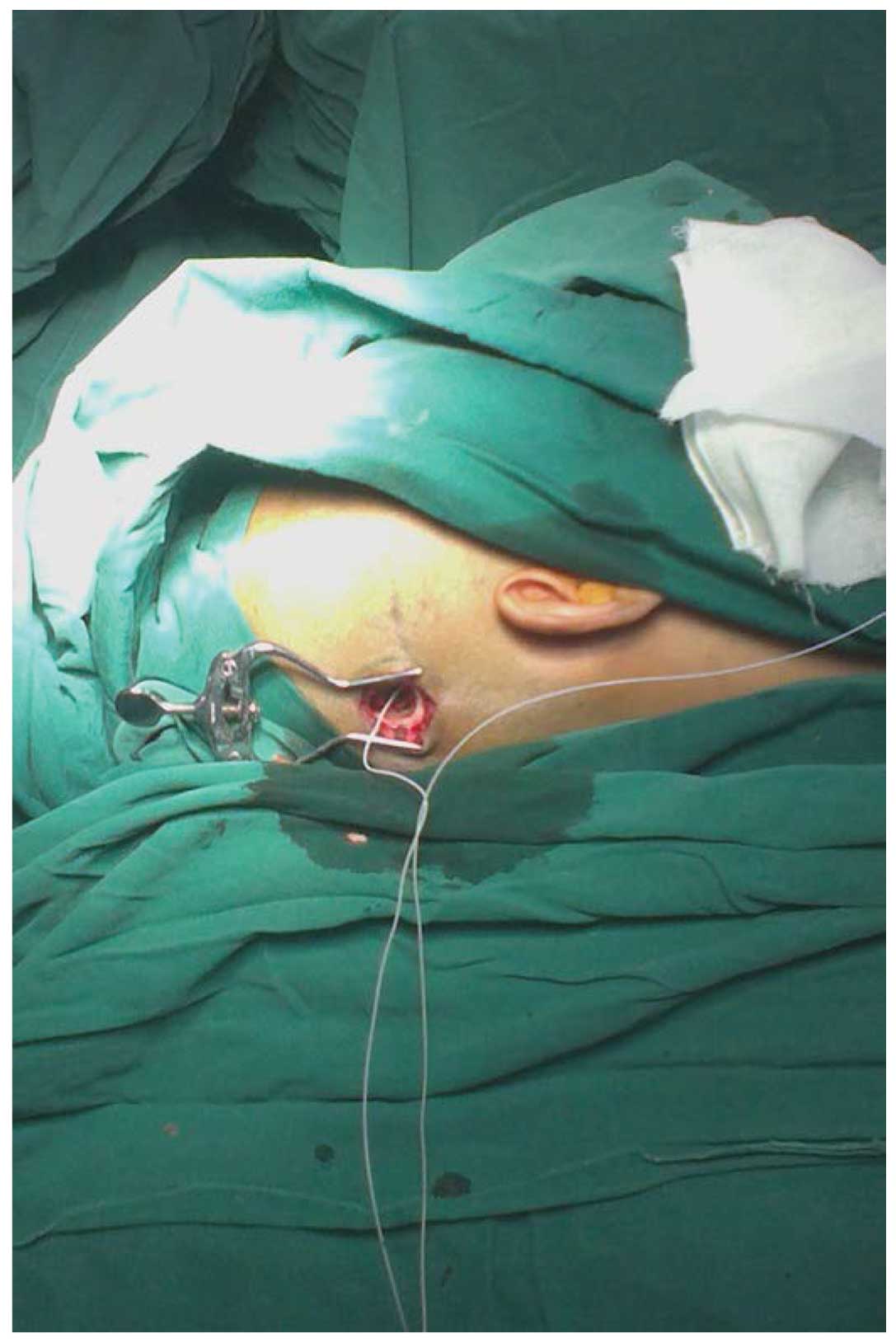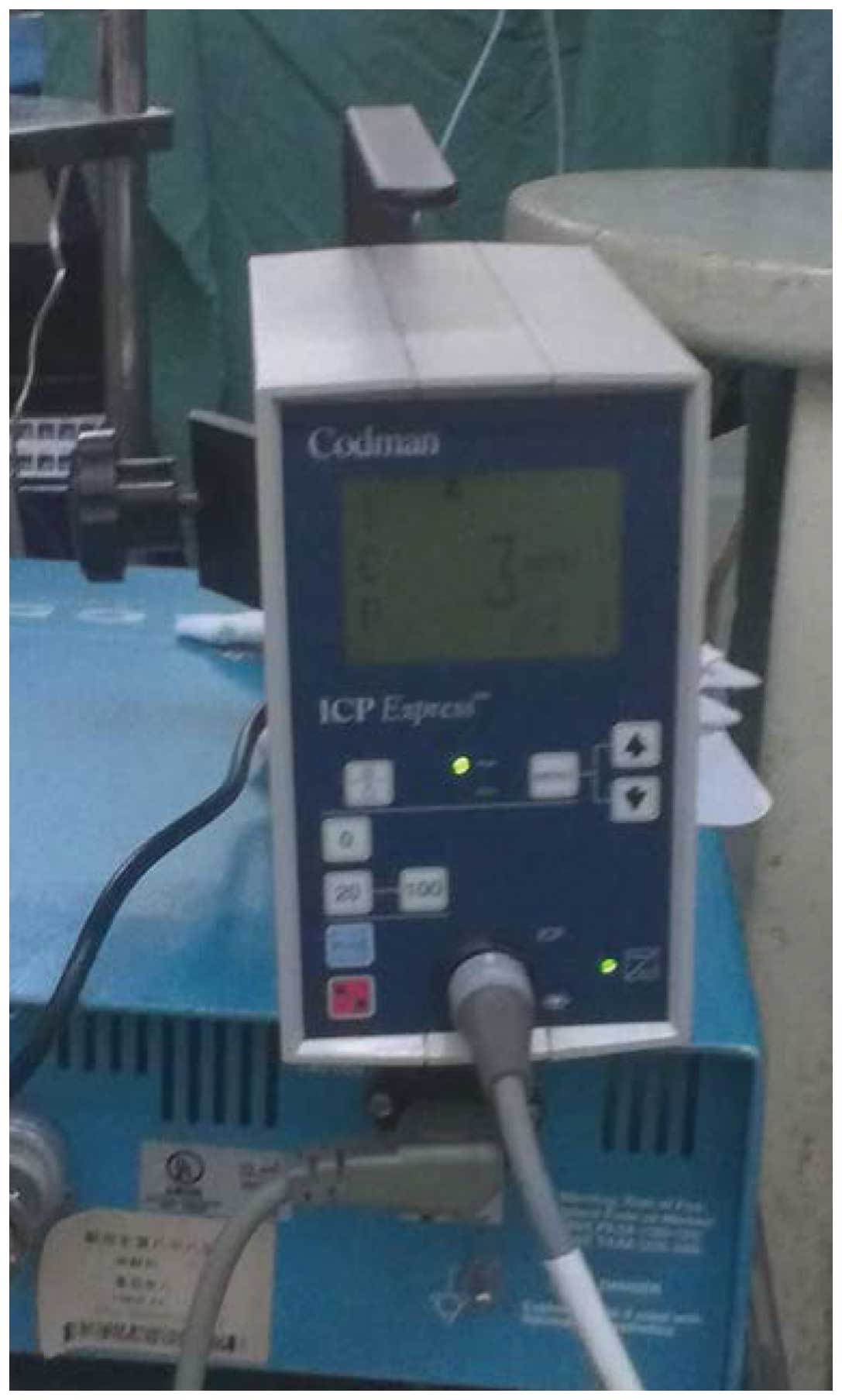|
1
|
Li J and Jiang JY: Chinese Head Trauma
Data Bank: effect of hyperthermia on the outcome of acute head
trauma patients. J Neurotrauma. 29:96–100. 2012. View Article : Google Scholar :
|
|
2
|
Ginsberg MD and Busto R: Combating
hyperthermia in acute stroke: a significant clinical concern.
Stroke. 29:529–534. 1998. View Article : Google Scholar : PubMed/NCBI
|
|
3
|
Wang CX, Stroink A, Casto JM and Kattner
K: Hyperthermia exacerbates ischaemic brain injury. Int J Stroke.
4:274–284. 2009. View Article : Google Scholar : PubMed/NCBI
|
|
4
|
Cairns CJ and Andrews PJ: Management of
hyperthermia in traumatic brain injury. Curr Opin Crit Care.
8:106–110. 2002. View Article : Google Scholar : PubMed/NCBI
|
|
5
|
Childs C, Wieloch T, Lecky F, Machin G,
Harris B and Stocchetti N: Report of a consensus meeting on human
brain temperature after severe traumatic brain injury: its
measurement and management during pyrexia. Front Neurol. 1:1462010.
View Article : Google Scholar
|
|
6
|
Jiang JY, Gao GY, Li WP, et al: Early
indicators of prognosis in 846 cases of severe traumatic brain
injury. J Neurotrauma. 19:869–874. 2002. View Article : Google Scholar : PubMed/NCBI
|
|
7
|
Natale JE, Joseph JG, Helfaer MA and
Shaffner DH: Early hyperthermia after traumatic brain injury in
children: risk factors, influence on length of stay, and effect on
short-term neurologic status. Crit Care Med. 28:2608–2615. 2000.
View Article : Google Scholar : PubMed/NCBI
|
|
8
|
Tokutomi T, Morimoto K, Miyagi T, et al:
Optimal temperature for the management of severe traumatic brain
injury: effect of hypothermia on intracranial pressure, systemic
and intracranial hemodynamics, and metabolism. Neurosurgery.
52:102–112. 2003.
|
|
9
|
Stiefel MF, Spiotta A, Gracias VH, et al:
Reduced mortality rate in patients with severe traumatic brain
injury treated with brain tissue oxygen monitoring. J Neurosurg.
103:805–811. 2005. View Article : Google Scholar : PubMed/NCBI
|
|
10
|
Dietrich WD and Bramlett HM: The evidence
for hypothermia as a neuroprotectant in traumatic brain injury.
Neurotherapeutics. 7:43–50. 2010. View Article : Google Scholar : PubMed/NCBI
|
|
11
|
Yokobori S, Frantzen J, Bullock R,
Gajavelli S, Burks S, Bramlett H and Dietrich WD: The use of
hypothermia therapy in traumatic ischemic/reperfusional brain
injury: review of the literatures. Ther Hypothermia Temp Manag.
1:185–192. 2011. View Article : Google Scholar : PubMed/NCBI
|
|
12
|
Globus MY, Alonso O, Dietrich WD, Busto R
and Ginsberg MD: Glutamate release and free radical production
following brain injury: effects of posttraumatic hypothermia. J
Neurochem. 65:1704–1711. 1995. View Article : Google Scholar : PubMed/NCBI
|
|
13
|
Maeda T, Katayama Y, Kawamata T and
Yamamoto T: Mechanisms of excitatory amino acid release in contused
brain tissue: effects of hypothermia and in situ administration of
Co2+ on extracellular levels of glutamate. J
Neurotrauma. 15:655–664. 1998. View Article : Google Scholar : PubMed/NCBI
|
|
14
|
Mori K, Maeda M, Miyazaki M and Iwase H:
Effects of mild (33 degrees C) and moderate (29 degrees C)
hypothermia on cerebral blood flow and metabolism, lactate, and
extracellular glutamate in experimental head injury. Neurol Res.
20:719–726. 1998.PubMed/NCBI
|
|
15
|
Mitani A, Kadoya F and Kataoka K:
Temperature dependence of hypoxia-induced calcium accumulation in
gerbil hippocampal slices. Brain Res. 562:159–163. 1991. View Article : Google Scholar : PubMed/NCBI
|
|
16
|
Chatzipanteli K, Wada K, Busto R and
Dietrich WD: Effects of moderate hypothermia on constitutive and
inducible nitric oxide synthase activities after traumatic brain
injury in the rat. J Neurochem. 72:2047–2052. 1999. View Article : Google Scholar : PubMed/NCBI
|
|
17
|
Sakamoto KI, Fujisawa H, Koizumi H,
Tsuchida E, Ito H, Sadamitsu D and Maekawa T: Effects of mild
hypothermia on nitric oxide synthesis following contusion trauma in
the rat. J Neurotrauma. 14:349–353. 1997. View Article : Google Scholar : PubMed/NCBI
|
|
18
|
Choi HA, Badjatia N and Mayer SA:
Hypothermia for acute brain injury - mechanisms and practical
aspects. Nat Rev Neurol. 8:214–222. 2012.PubMed/NCBI
|
|
19
|
Clifton GL, Miller ER, Choi SC, et al:
Lack of effect of induction of hypothermia after acute brain
injury. N Engl J Med. 344:556–563. 2001. View Article : Google Scholar : PubMed/NCBI
|
|
20
|
Clifton MG, Valadka PA, Aisuku IP and
Okonkwo DO: Future of rewarming in therapeutic hypothermia for
traumatic brain injury: a personalized plan. Ther Hypothermia Temp
Manag. 1:3–7. 2011. View Article : Google Scholar : PubMed/NCBI
|
|
21
|
Tokutomi T, Morimoto K, Miyagi T,
Yamaguchi S, Ishikawa K and Shigemori M: Optimal temperature for
the management of severe traumatic brain injury: effect of
hypothermia on intracranial pressure, systemic and intracranial
hemodynamics, and metabolism. Neurosurgery. 52:102–112. 2003.
|
|
22
|
Soukup J, Zauner A, Doppenberg EM, Menzel
M, Gilman C, Young HF and Bullock R: The importance of brain
temperature in patients after severe head injury: relationship to
intracranial pressure, cerebral perfusion pressure, cerebral blood
flow, and outcome. J Neurotrauma. 19:559–571. 2002. View Article : Google Scholar : PubMed/NCBI
|
|
23
|
Dearden NM, Gibson JS, McDowall DG, Gibson
RM and Cameron MM: Effect of high-dose dexamethasone on outcome
from severe head injury. J Neurosurg. 64:81–88. 1986. View Article : Google Scholar : PubMed/NCBI
|
|
24
|
Cooper PR, Moody S, Clark WK, Kirkpatrick
J, Maravilla K, Gould AL and Drane W: Dexamethasone and severe head
injury. A prospective double-blind study. J Neurosurg. 51:307–316.
1979. View Article : Google Scholar : PubMed/NCBI
|
|
25
|
Piek J, Chesnut RM, Marshall LF, et al:
Extracranial complications of severe head injury. J Neurosurg.
77:901–907. 1992. View Article : Google Scholar : PubMed/NCBI
|
|
26
|
Halloran LG, Zfass AM, Gayle WE, Wheeler
CB and Miller JD: Prevention of acute gastrointestinal
complications after severe head injury: a controlled trial of
cimetidine prophylaxis. Am J Surg. 139:44–48. 1980. View Article : Google Scholar : PubMed/NCBI
|
|
27
|
Jeremitsky E, Omert LA, Dunham CM,
Wilberger J and Rodriguez A: The impact of hyperglycemia on
patients with severe brain injury. J Trauma. 58:47–50. 2005.
View Article : Google Scholar : PubMed/NCBI
|
|
28
|
Clifton GL, Robertson CS, Grossman RG,
Hodge S, Foltz R and Garza C: The metabolic response to severe head
injury. J Neurosurg. 60:687–696. 1984. View Article : Google Scholar : PubMed/NCBI
|
|
29
|
Mayumi H, Zhang QW, Nakashima A, Masuda M,
Kohno H, Kawachi Y and Yasui H: Synergistic immunosuppression
caused by high-dose methylprednisolone and cardiopulmonary bypass.
Ann Thorac Surg. 63:129–137. 1997. View Article : Google Scholar : PubMed/NCBI
|
|
30
|
Groysman LI, Emanuel BA, Kim-Tenser MA,
Sung GY and Mack WJ: Therapeutic hypothermia in acute ischemic
stroke. Neurosurg Focus. 30:E172011. View Article : Google Scholar : PubMed/NCBI
|
|
31
|
Geffroy A, Bronchard R, Merckx P, Seince
PF, Faillot T, Albaladejo P and Marty J: Severe traumatic head
injury in adults: which patients are at risk of early hyperthermia?
Intensive Care Med. 30:785–790. 2004. View Article : Google Scholar : PubMed/NCBI
|











